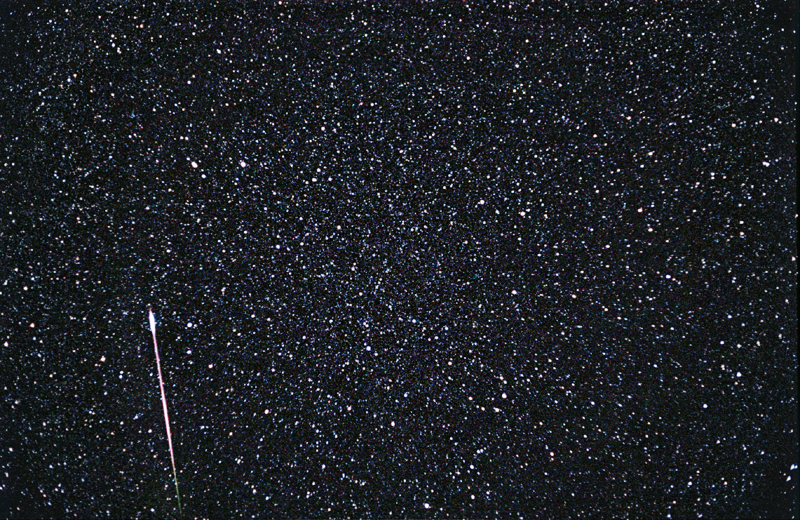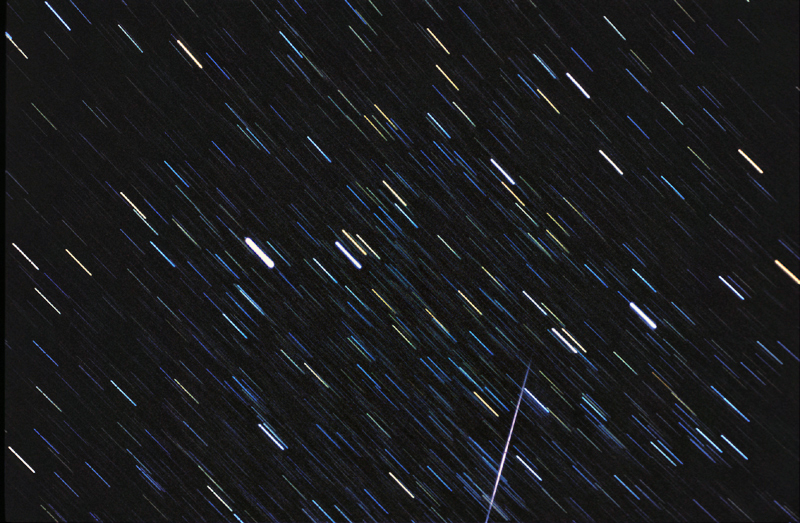
30 minutes exposure, Kodak Ektachrome 400 slide film.
50mm f/2 Nikkormat lens.
May 5 1987.

The eta aquarids are the best meteor shower for southern hemisphere observers. The shower has a main peak ZHR of around 90 on May 4, and a secondary peak of around 60 on May 7. It is visually active from April 25 until May 18 and has a ZHR above 20 between May 1 and May 11.
The eta aquarids and their sister shower, the October orionids are debris from comet Halley. During October, the Earth encounters the stream on its inbound leg and then in May on the outbound leg. The May encounter is much closer than that of October, and so the eta aquarids are the more active shower. The eta aquarids are moderately swift, and have a high proportion of bright meteors. The brightest I have observed was magnitude -6. Many of the meteors display colour, with yellow being the most common, and about one third of the meteors leave a persistant train, some of which can be very long lasting. One several occassions I have observed trains that have lasted over 30 minutes.
The first eta aquarid I observed was on May 3, 1970. It was -4 magnitude and left a train that lasted for over 30 minutes! After that I was hooked! One of my most enjoyable times observing the eta aquarids was in 1984 when I spent two weeks at the Wolf Creek meteorite crater observing the shower. Although photography was not possible due to an accident with the film, I recorded over 5000 meteors on that trip. A description of the trip and the results were published in the November 1985 edition of 'Astronomy'.
The earliest surviving photograph I have of an eta aquarid was taken in 1981. This meteor was magnitude 0, greenish in colour and left a persistant train for 1 second. The negative is now rather scratched, but the meteor is visible at the lower right.
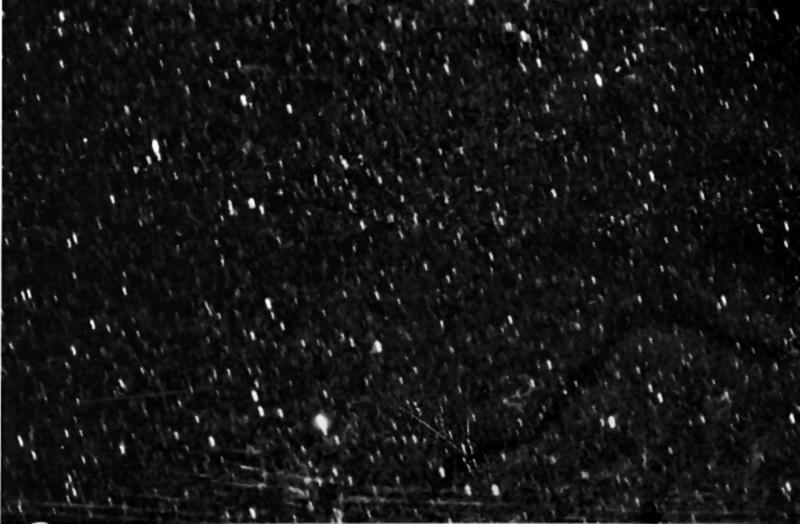
On a number of occassions I made trips to the north of the state to get better views of the eta Aquarids. One of these was in 1987, when I spent several enjoyable days near the town of Broome with 2 friends. The meteor activity was very high and there were several comets around as well. Add to this a naked eye supernova (1987a in the LMC) and it was an observer's dream. Especially as the nights were very warm, with a wonderful beach waiting during the day, and no mosquitoes!!!! Photography wise, this was my most successful meteor observing trip, with a total of 10 meteors photographed. Below are a couple of images of eta Aquarids from that trip.
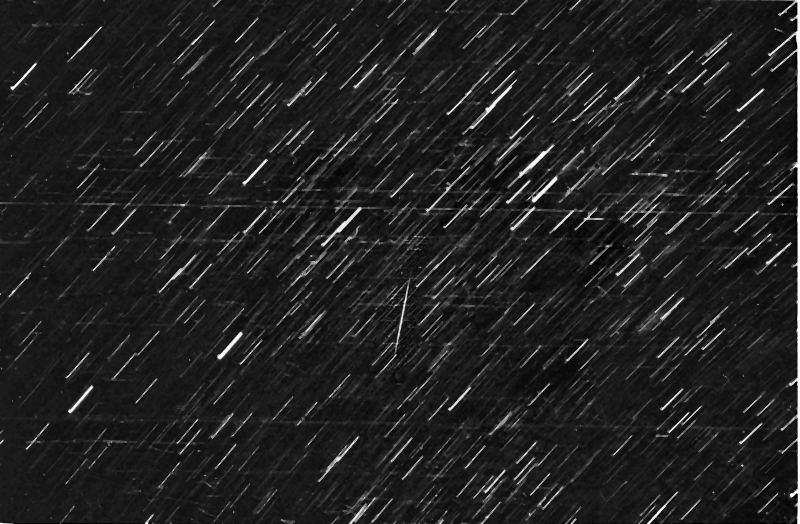
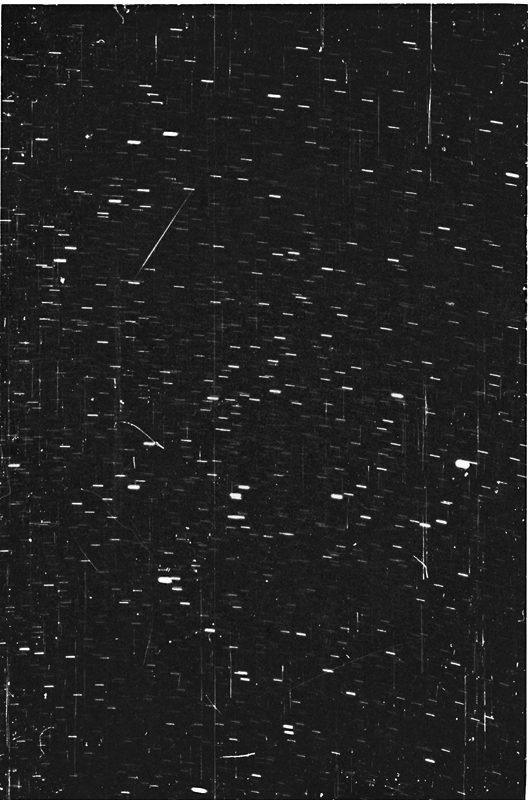
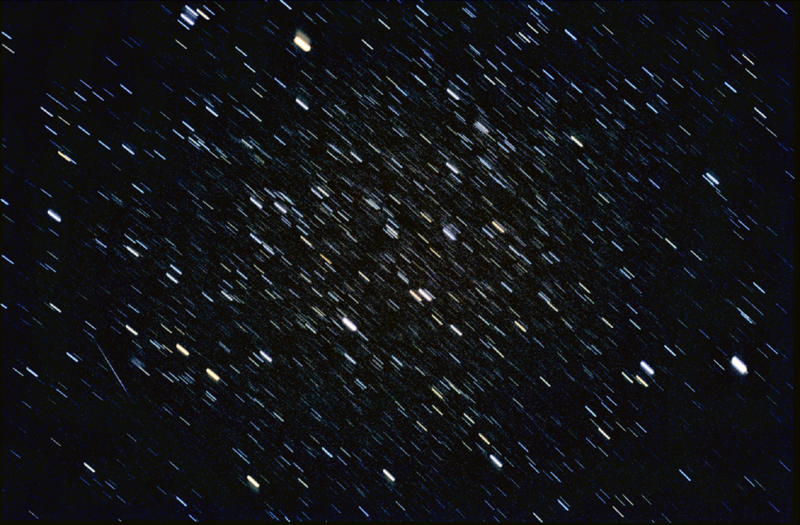
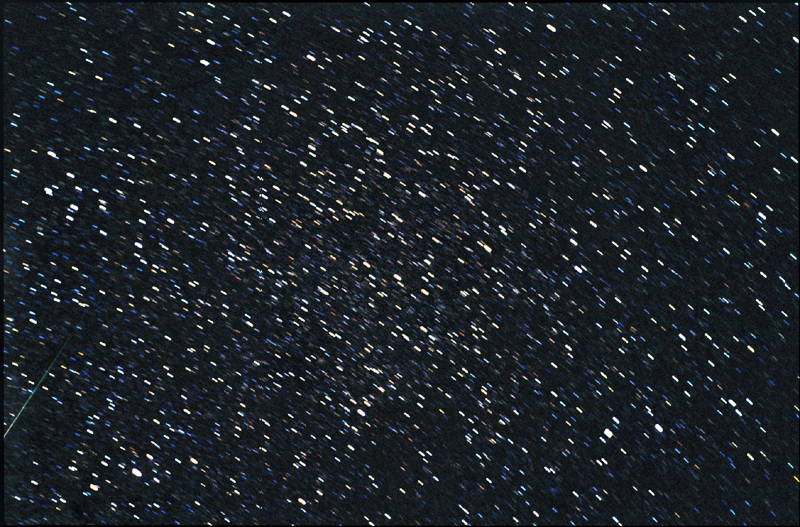
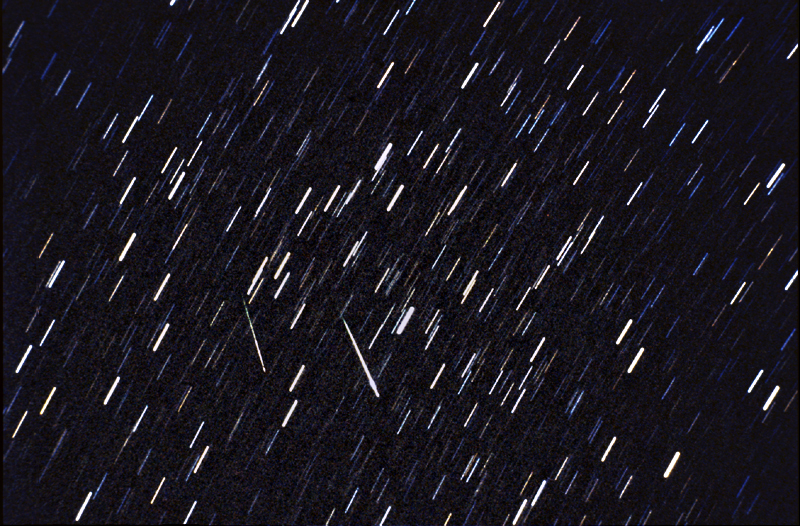
The meteor on the left was magnitude -1, yellow in colour, and left a train which lasted for 1 second, while The meteor on the right was magnitude -3, yellow in colour, and left a train which lasted for 5 seconds. This latter meteor almost caused a problem for one of my friends who was trying to observe a faint comet close to where the meteor appeared. It was close enough for him to see the flash in the telescope. Any closer an he would have lost his night vision!
In 1997 while observing the eta aquarids at the Chiro observatory, this -5 eta aquarid burst through the field of view of one camera. The remarkable thing with this meteor was not the brightness, good that it was, but rather the duration of the persistant train. For the next 30 minutes I watched as it broke in two, with the eastern part (lower) drift northwards into Aquarius, and the western portion drift south through Capricornus and into Microscopium.
